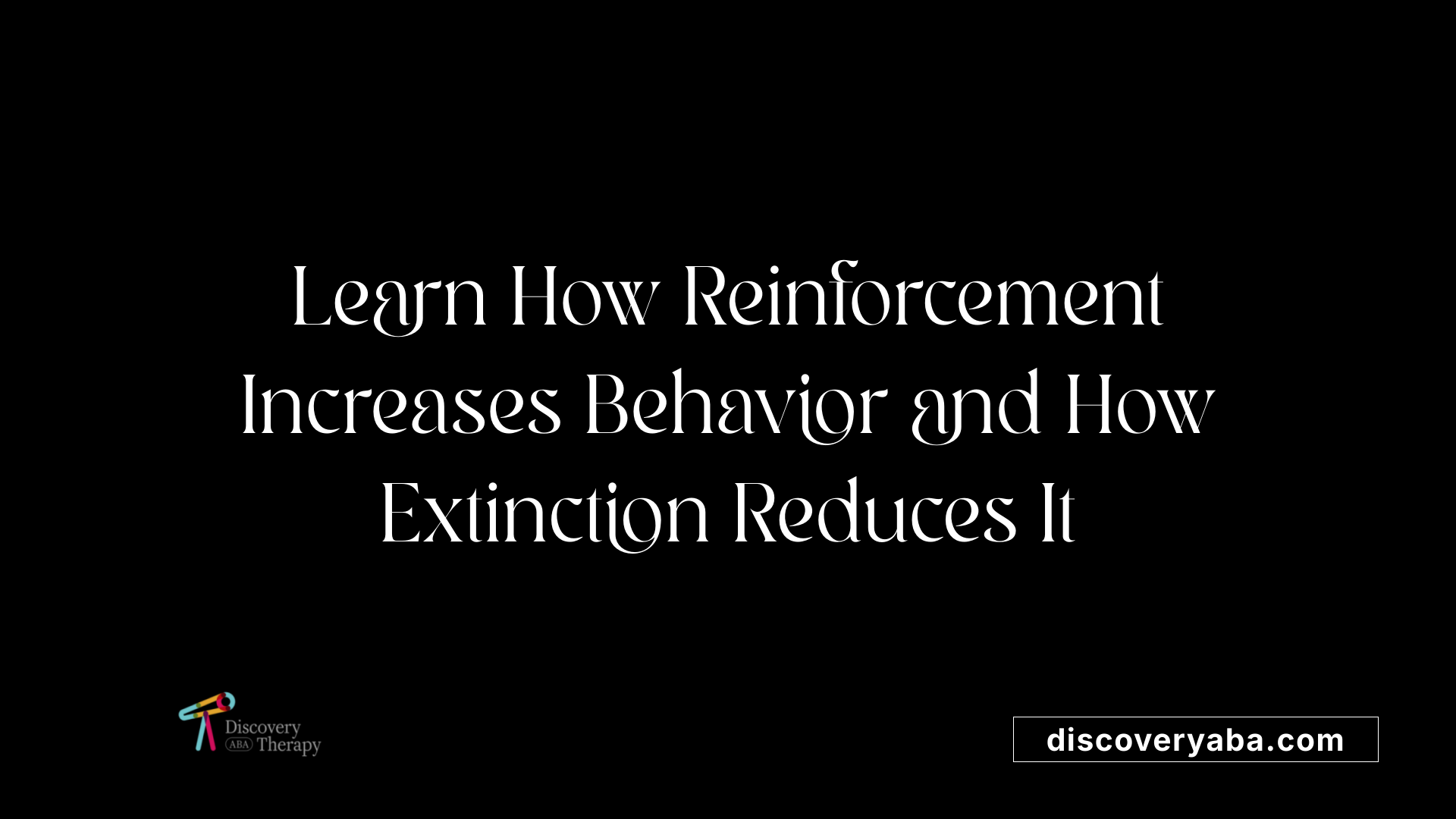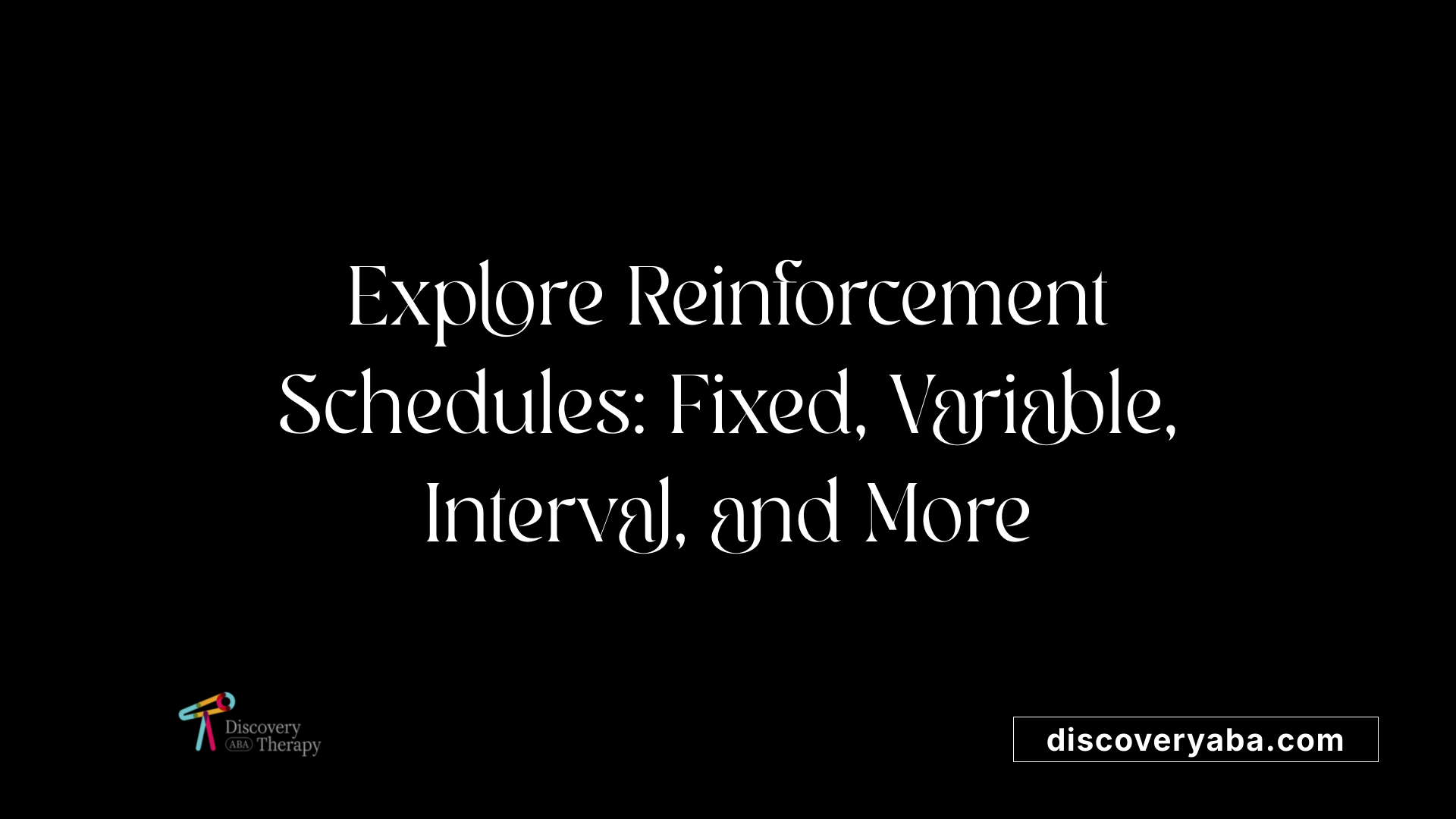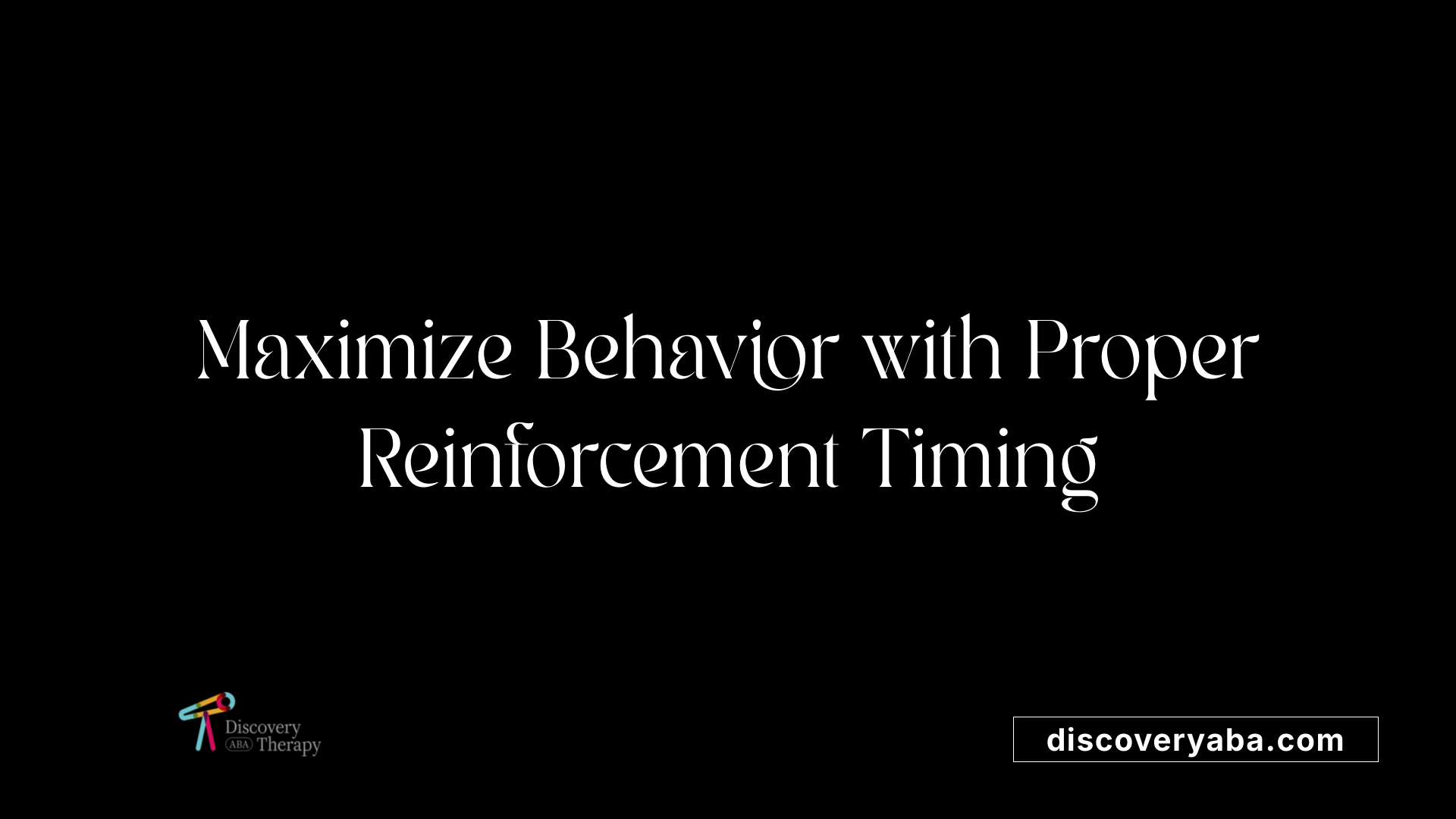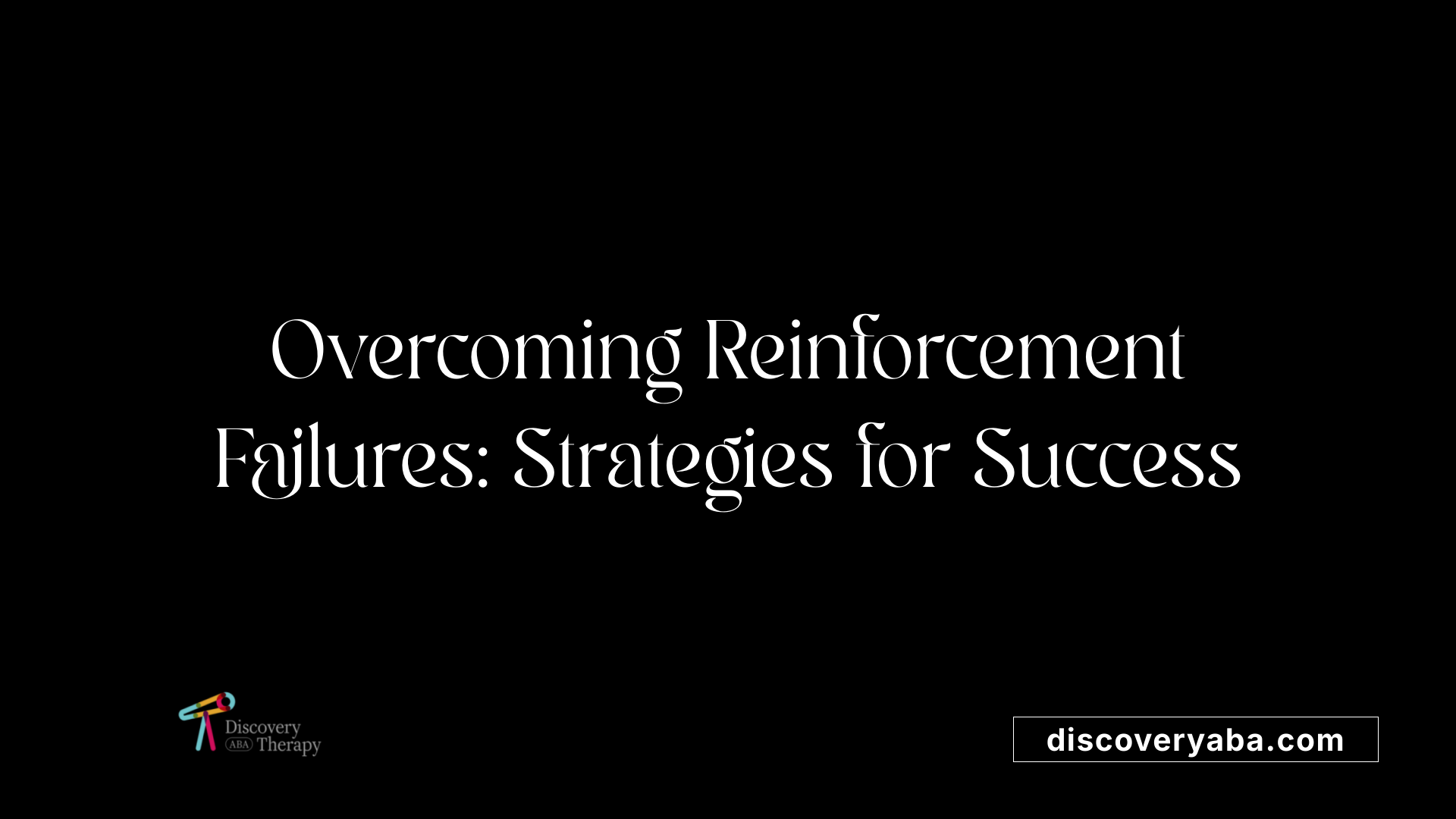What to do when reinforcement stops working
Navigating the Challenges of Reinforcement in Behavioral Strategies

Understanding Reinforcement and Its Limitations
Reinforcement forms the cornerstone of behavior modification, with positive reinforcement encouraging desirable responses by rewarding them. However, its effectiveness can diminish over time or under certain circumstances. Recognizing why reinforcement stops working and knowing how to respond is vital for effective behavior management.
Understanding Reinforcement and Extinction

What is reinforcement?
Reinforcement is a process used to increase the likelihood of a specific behavior occurring again. When we reinforce a behavior, we provide a reward or positive stimulus immediately after the behavior, strengthening the connection between the behavior and the reward.
How does reinforcement lead to behavior increase?
Reinforcement can take two forms: positive and negative. Positive reinforcement involves adding something desirable, like praise or treats, after a behavior. Negative reinforcement involves removing an unpleasant condition, like stopping loud noise when the desired behavior occurs. Both methods elevate the chances of the behavior happening again.
For reinforcement to be effective, it must be contingent on the behavior, meaning the reward is only given when the specific action occurs. Timing also matters; delivering the reward as soon as possible—ideally within three seconds—helps the individual connect the behavior with the reward.
Using a variety of rewards keeps motivation high and prevents boredom. Rewards should be tailored to individual preferences, considering what each person finds rewarding—whether social, edible, sensory, or tangible. Consistent reinforcement is crucial, especially during early learning stages, to build strong, lasting behaviors.
What is reinforcement extinction and how does it occur?
Reinforcement extinction refers to the gradual decrease in a behavior when the reinforcement that previously maintained it is no longer provided. Essentially, when reinforcement stops, the behavior tends to decline over time.
This process occurs because the consequences that sustained the behavior are removed. For example, if a child no longer receives praise for a job well done, the frequency of their praised behavior is likely to decrease. It is important to note that extinction does not erase the learned behavior but temporarily suppresses it.
In some cases, behaviors may temporarily intensify initially—a phenomenon called an extinction burst—before declining. If reinforcement is reintroduced after extinction, the behavior can reappear, sometimes more strongly.
Overall, understanding extinction helps in designing effective behavioral interventions that encourage desired behaviors while appropriately discontinuing reinforcement for undesired ones.
Different Types of Intermittent Reinforcement Schedules

What are the different types of intermittent reinforcement schedules?
Intermittent reinforcement schedules are patterns where a specific behavior is rewarded only some of the time, not every instance. This approach helps in making behaviors more resistant to extinction, meaning they are less likely to disappear once reinforcement stops.
There are four main types of schedules:
| Schedule Type | Description | How It Works | Impact on Behavior |
|---|---|---|---|
| Fixed Ratio (FR) | Reinforces after a set number of responses. | For example, a child gets a reward after every 5 correct answers. | High, steady response rates with brief pauses after reinforcement. |
| Variable Ratio (VR) | Reinforces after an unpredictable number of responses, averaging out to a certain number. | Like gambling, where wins happen after an unpredictable number of plays. | Produces a high, steady response rate, resistant to extinction. |
| Fixed Interval (FI) | Reinforces the first response after a fixed period of time. | For instance, checking for reinforcement every 10 minutes results in responses peaking near the end of each interval. | Responses increase as the time for reinforcement approaches, with more activity closer to the interval's end. |
| Variable Interval (VI) | Reinforces responses after an unpredictable amount of time, averaging to a specific length. | Checking for messages, where the reward appears at random times. | Leads to a slow, steady response rate. |
Understanding these schedules is crucial for designing effective behavioral interventions. They encourage persistence and decrease the likelihood of behaviors stopping abruptly when reinforcement ceases.
Using intermittent reinforcement is common in both research and practical settings. It helps maintain behaviors over time and across different environments, making it a powerful tool in behavior management.
Impact of Delayed Reinforcement and Strategies to Optimize Reinforcement Timing

How does delayed reinforcement impact behavior?
Delays in reinforcement can influence behavior in various ways. If the reward is not given immediately after the targeted action, the individual may not connect the reinforcement to the specific behavior, reducing its effectiveness. Immediate reinforcement tends to produce stronger and faster learning because the person clearly associates the reward with the behavior.
However, in some cases, delayed reinforcement can still support learning, especially if the delay is brief and the individual is aware of the connection. This is why timing is essential; the closer the reward occurs to the behavior, the better its impact. Overusing rewards or providing them after a significant delay may lessen motivation or cause confusion regarding what behavior is being reinforced.
Why is immediate reinforcement so important?
Immediate reinforcement maximizes the chances that the desired behavior will be repeated. It helps establish a clear cause-and-effect link in the individual’s mind, making the learning process more efficient.
Best practices suggest delivering reinforcement within three seconds of the target behavior. This quick response helps clarify what action earned the reward and encourages ongoing behavior. When reinforcement is delayed or inconsistent, individuals may become frustrated or confused, leading to weaker learning outcomes.
What strategies can be used to ensure prompt delivery of rewards?
To optimize the timing of reinforcement, caregivers and educators should focus on prompt and clear delivery of rewards following the desired behavior. Some effective strategies include:
- Preparedness: Have reinforcers ready in advance to avoid delays.
- Immediate Response: Use quick, consistent responses to reinforce behavior as soon as it occurs.
- Visual or Verbal Cues: Employ prompts that signal when a reward is forthcoming, helping to reinforce the connection.
- Use of Schedules: Implement reinforcement schedules, such as continuous reinforcement during initial learning, switching to partial schedules once the behavior is established.
- Tailoring Reinforcers: Use personalized rewards that are meaningful to the individual, making timely reinforcement more motivating.
In summary, both the effectiveness of reinforcement and the speed at which it is delivered are critical factors in shaping and maintaining desired behaviors. Strategies that focus on immediate, well-timed reinforcement can significantly improve learning outcomes and behavior change.
Strategies When Reinforcement Fails to Yield Results
What strategies can be used when reinforcement strategies stop working effectively?
When reinforcement strategies become less effective, it is crucial to evaluate how they are being implemented. Ensure that rewards are delivered immediately after the target behavior, as delays can diminish their impact.
Assess whether reinforcement is consistent and contingent on the behavior. Inconsistent or delayed reinforcement can lead to confusion and reduce motivation.
One effective approach is to incorporate differential reinforcement techniques. For example, Differential Reinforcement of Alternative Behavior (DRA) involves reinforcing positive behaviors that serve as alternatives to problematic ones, while simultaneously reducing reinforcement for undesired actions.
Adjusting the variety and schedule of reinforcers can help maintain motivation. Using a range of rewards—such as social praise, preferred activities, or edible treats—prevents satiation, where too much of one reward makes it less appealing. Switching from continuous to intermittent reinforcement can also increase resistance to extinction and promote persistence.
Gradual fading of reinforcement encourages individuals to rely less on external rewards and develop intrinsic motivation. This process involves slowly reducing the frequency or magnitude of reinforcement over time, while supporting the individual to perform behaviors independently.
Regular data collection and feedback are vital. Monitoring responses and gathering insights help tailor reinforcement strategies to the individual's evolving preferences and needs.
In cases where standard adjustments are insufficient, exploring new reinforcement options or intensifying existing ones may be warranted. Ultimately, these strategies should be personalized and guided by ongoing assessment to maximize long-term behavior change.
Addressing Challenges in Behavior Management When Reinforcement Fails

How can behavioral challenges be addressed when reinforcement strategies prove ineffective?
When traditional reinforcement approaches do not lead to expected improvements, it is important to reassess and adapt the intervention plan. A starting point is conducting a functional analysis of the challenging behavior. This process helps identify the underlying reasons for the behavior, such as seeking attention, escape, or sensory stimulation.
Once the causes are understood, alternative reinforcement methods can be deployed. For example, varying reinforcement schedules to include intermittent or variable ratio reinforcement can maintain motivation and reduce satiation or overuse. Shaping new behaviors or reinforcing smaller steps toward the ultimate goal can also be effective.
In addition to modifying reinforcement types and schedules, incorporating other techniques can support progress. Visual supports, such as picture schedules or social stories, help clarify expectations and context, making reinforcement more meaningful. Teaching self-calming strategies or coping skills provides the individual with tools to manage triggers independently.
Creating a supportive environment is also crucial. This involves fostering positive interactions and emphasizing connection rather than relying solely on reinforcement for behavior change. Consistency in applying these modifications, along with patience and persistence, enhances the likelihood of success.
Integrating approaches like Applied Behavior Analysis (ABA) and teaching alternative, positive behaviors can address persistent challenges more effectively. If reinforcement alone isn’t working, exploring a combination of intervention strategies often leads to better long-term outcomes and promotes overall behavioral growth.
Building Long-Term Behavior Change and Prevention of Reinforcement Failure
How can gradual fading of reinforcement contribute to sustained behavior change?
Gradual fading of reinforcement is a crucial strategy for maintaining long-term behavioral improvements. When a behavior is initially being learned, continuous reinforcement—where the behavior is rewarded every time it occurs—is most effective. However, to ensure that the behavior persists once the reinforcement is removed, the schedule must be gradually adjusted.
This process involves slowly reducing the frequency or magnitude of rewards over time. By doing this gradually, individuals become less dependent on constant reinforcement and start performing the behavior intrinsically. It helps prevent the sudden drop in behavior that often occurs when reinforcement stops abruptly, known as extinction.
A well-structured fading plan ensures that the newly acquired behavior stabilizes and becomes self-sustaining without the need for frequent external rewards.
Why is monitoring and adjusting reinforcement strategies important?
Consistent observation and modification of reinforcement strategies are vital for success. Every individual’s preferences and motivational states can change, which impacts how effective reinforcers are.
Regular monitoring allows practitioners and parents to identify signs of satiation—where a reward no longer motivates because too much has been given—or a decrease in responsiveness to certain reinforcers. When this occurs, strategies should be adjusted by altering the type, size, or timing of reinforcement.
Adjustments could include introducing new rewards, increasing the intensity of existing ones, or shifting from continuous to intermittent reinforcement for more resilience.
How can personalizing reinforcement prevent satiation?
Personalizing reinforcers is essential for maintaining motivation and preventing satiation. Individual preferences vary significantly and can change over time, so it is important to tailor rewards specifically to what each person finds desirable.
A diverse array of reinforcers—such as social praise, activities, tangible items, sensory inputs, or edibles—ensures that the individual remains engaged. Regularly rotating or varying these rewards avoids the risk of satiation, where a person loses interest because they receive the same reward repeatedly.
By continually assessing what motivates the individual, practitioners can select the most effective reinforcers, thereby supporting sustained behavior change.
| Strategy | Description | Benefits |
|---|---|---|
| Gradual fading of reinforcement | Slowly reducing reward frequency or size over time | Promotes independence and long-lasting behavior |
| Monitoring and adjusting reinforcers | Regular observation and adaptation of reinforcement plan | Ensures ongoing motivation and prevents satiation |
| Personalizing rewards | Tailoring rewards to individual preferences and changes | Maintains interest and motivation over time |
Sustaining Effective Reinforcement Strategies
Maintaining effective reinforcement requires ongoing evaluation, variation, and sensitivity to individual preferences. When reinforcement ceases to produce desired outcomes, systematically adjusting the type, timing, and schedule of reinforcement, combined with behavioral analysis and a commitment to personalization, can revitalize motivation and sustain behavior change. Recognizing early signs of reinforcement failure and adapting strategies accordingly is essential for long-term success in behavior management.
References
- What to do When Positive Reinforcement Isn't Working - May Institute
- 9 Tips for Using Reinforcements Effectively - Behavior Nation
- Let's talk about Reinforcement - The Center for Motivation & Change
- INTERMITTENT REINFORCEMENT AND RESISTANCE TO ...
- How Schedules of Reinforcement Work in Psychology - Verywell Mind
- Reinforcement and Punishment – General Psychology
- [PDF] Reinforcement Strategies - Intensive Intervention
- What to do When Positive Reinforcement Isn't Working - May Institute
- Positive Reinforcement: If You Don't Do It Right, It Can Backfire!
Does Your Child Have An Autism Diagnosis?
Learn More About How ABA Therapy Can Help
Find More Articles
Contact us
North Carolina, Nevada, Utah, Virginia
New Hampshire, Maine
Arizona, Colorado, Georgia, New Mexico, Oklahoma, Texas
.avif)




































































































